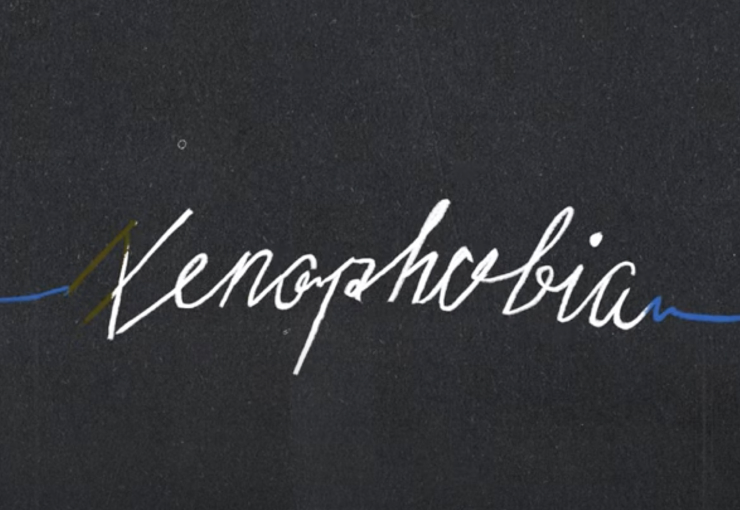Now dig deeper into understanding xenophobia and racism with these resources and learning activities designed for the secondary or undergraduate classroom:
Timeline of Xenophobia and Racism in the United States
The underlying assumption of this video is that we in the United States are situated within a system of structural racism. Racism and xenophobia have been a part of our country since its beginning: from Native American genocide to slavery to immigration policies that target certain immigrant populations.
Explore this timeline of the history of xenophobia and racism in the United States that elaborates on the events in the video
Both the video and the timeline are based on the book America for Americans: A History of Xenophobia in the United States by Erika Lee.
Classroom Activity 1: Connect–Extend–Challenge Thinking Routine
Purpose: To encourage students to think more deeply and critically about the Xenophobia video.
This activity is adapted from a thinking routine from Making Thinking Visible: How to Promote Engagement, Understanding, and Independence by Ron Ritchhart, Mark Church, and Karin Morrison.
Thinking routines are simple strategies that teachers can use to cultivate thinking and deepen learning for students.
The Connect-Extend-Challenge thinking routine helps students connect new ideas to prior knowledge and to think about how new learning brings up additional questions, wonderings, and puzzles for them.
See Activity 1 Instructions here.
Classroom Activity 2: Phrase-Word and Blackout Poetry
Purpose: To narrow the focus on xenophobia and racism to a particular event in U.S. history: the incarceration of people of Japanese ancestry during World War II.
This activity uses oral histories that are available through Densho, a Japanese American history organization dedicated to preserving, educating, and sharing the story of the World War II incarceration of people of Japanese ancestry. Over 900 oral histories, including transcripts, are available on the Densho website for classroom use.
Oral histories are primary source, first person accounts that are a powerful way to increase awareness and knowledge about xenophobia and racism and to connect emotionally with the personal stories of real people.
The two oral histories link the xenophobia video to real-life stories of people who were affected by xenophobic and racist policies of the U.S. government.
In the first clip, Jun Kurumada describes an incident that happened to him in Utah during the war. Kurumada was born in 1913 in Ogden, UT, and established a dental practice in Salt Lake City, UT, prior to the war.
In the second clip, Hope Omachi Kawashima describes how she was treated during the war by other children when she was an elementary school student in Twin Falls, Idaho. Kawashima was born in 1937 in Auburn, CA, and was incarcerated in the Tule Lake Concentration Camp and the Topaz Concentration Camp.
This activity is a combination of two different thinking routines. Thinking routines are simple strategies that teachers can use to cultivate thinking and deepen learning for students.The first part of the activity, Phrase-Word, is adapted from a thinking routine from Making Thinking Visible by Ron Ritchhart, Mark Church, and Karin Morrison.
The Phrase-Word thinking routine helps students identify and hone in on the essence of the oral histories. After students have identified the parts of the oral history that “speak” to them, they use a second activity, Blackout Poetry, to distill the essence of the text even further.
Blackout poetry is created when someone takes a document, reads it, and crosses out, or redacts, a majority of the text, leaving a “poem” that reveals new layers of meaning. Versions of blackout poetry date back to the 1700s, but it has been made popular in recent years by Austin Kleon’s book, Newspaper Blackout.
See Activity 2 instructions here.
Classroom Activity 3: Scavenger Hunt
Purpose: To get students to think about what inspires or reminds them of why it’s important to take a stand against injustice.
This activity is a variation of a traditional scavenger hunt where people look for a particular object. It gets students up out of their seats and moving around; it also encourages them to think creatively about the symbolism or connections between objects and ideas. Finally, it encourages students to move beyond thinking and feeling to taking action.
See Activity 3 instructions here.
This material is based upon work assisted by a grant from the U.S. Department of the Interior, National Park Service. Any opinions, findings, and conclusions or recommendations expressed in this material are those of the author(s) and do not necessarily reflect the views of the U.S. Department of the Interior.
This material received Federal financial assistance for the preservation and interpretation of U.S. confinement sites where Japanese Americans were detained during World War II. Under Title VI of the Civil Rights Act of 1964, Section 504 of the Rehabilitation Act of 1973, and the Age Discrimination Act of 1975, as amended, the U.S. Department of the Interior prohibits discrimination on the basis of race, color, national origin, disability or age in its federally funded assisted projects. If you believe you have been discriminated against in any program, activity, or facility as described above, or if you desire further information, please write to:
Office of Equal Opportunity
National Park Service
1849 C Street, NW
Washington, DC 20240

